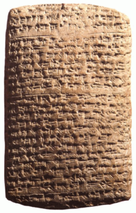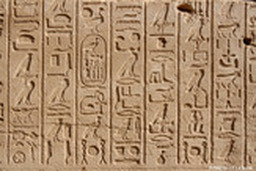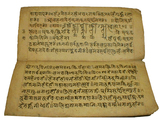Lets go back in time...
How did the ancient civilizations store their memories?
Today in America we have all different types of new technology to store information. Why remember phone numbers when we have the ability to store the information in cell phones, computers, etc., (see technology) 5000 years ago the people of that time didn't have the ability to create all the new inventions that we now do, so what did they use? In addition, learning about the first records and words give us insights into the daily life of these ancient people and how we have to remember the advances in their society. The basis of each of these different writing systems was previously borrowed from another system that borrowed from another and so on. Many of their cultures can be studied because of the writing systems that they developed depicted below.
"Technology comes from two Greek words. Techne, meaning art or craft and logos meaning logic or reason."
- Ancient Comunication by Woods
- Ancient Comunication by Woods
Cave Paintings and Engravings
Dating back to 30,000 BC during the Paleolithic era, cave paintings were used to record the stories of what happened during this era in time. These stories and artwork can be seen be generations later and give leading insights into the ideas of the culture.
This video shown to the left features a song by Natasha Bedingfield called Wild Horses. In this music video cave paintings of horse shift on the screen. Natasha is singing about essentially breaking free and wishing that she is able to "run with the wild horses". These cave paintings date back to the Lascaux Altamira, a group of prehistoric cave paintings found in France in the Southwest.
This video shown to the left features a song by Natasha Bedingfield called Wild Horses. In this music video cave paintings of horse shift on the screen. Natasha is singing about essentially breaking free and wishing that she is able to "run with the wild horses". These cave paintings date back to the Lascaux Altamira, a group of prehistoric cave paintings found in France in the Southwest.
Sumerians-Mesopotamia
The Sumerians civilization lived between 10,000 and 35000BC in Mesopotamia, which is present day Iraq, and in 1500BC in China. This civilization showed the first evidence of written writing. Pictograms or symbols were used first (pictures that represent different scenarios, events, etc.). They developed the first writing system of cuneiform. The word cuneiform is derived from two Latin words: cuneus , which means "wedge," and forma , which means "shape." With the development of writing, laws were able to be recorded and stories passed down and read throughout generations, without the confusion from the word of mouth.
Ancient Egypt
The Egyptians used papyrus as their paper to write their accounts of daily life on. They showed evidence of mythology, which they often recorded by use of pictures and symbols. Around 3000BC hieroglyphics or "the words of the gods" or "divine words" were used. Hieroglyphics consists of an alphabet of over 2000 symbols, they are written in rows or columns and are read from right to left. The finding of the Rosetta stone enabled us to deceiver the coding of this civilization because there were three different languages placed on the stone; the hieroglyphics, demotic writing, and Greek.
Ancient India
Around 4000 BC a new form of recording and writing information took over in India. Sanskrit became popular. Sanskrit is a writing technique divided into periods; The Vedic period in which religious books called the Vedas were written. The Second stage became the Epic period which is the creation of the Epic poems, the Ramayana and the Mahabharata.
The Incas
The Incan civilization lived in South America in the 1400s- 1500s and used a form of recording their crops, taxes, and other ideas with Quipu. Quipu is a system of knotted cords the exact use for this is still undetermined but from historian's perspective it is the Inca's way of telling our world how they lived. The different placement, colors, number of knots, knot size as well as type tell a different message and share a different number or story with us. Quipu can also be called "data in knots" and people will forever remain mysterious about every single symbol each knot and color express.
Sources:
Anceient Communication technology- Michael and Mary B. Woods
http://www.discoveringegypt.com/hiero1.htm
http://www.sfu.ca/archaeology/museum/laarch/inca/quipue.html
http://khipukamayuq.fas.harvard.edu/MatchingKhipu.html
Anceient Communication technology- Michael and Mary B. Woods
http://www.discoveringegypt.com/hiero1.htm
http://www.sfu.ca/archaeology/museum/laarch/inca/quipue.html
http://khipukamayuq.fas.harvard.edu/MatchingKhipu.html




